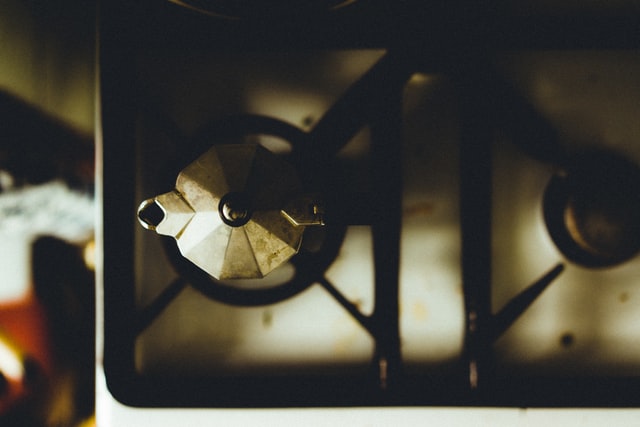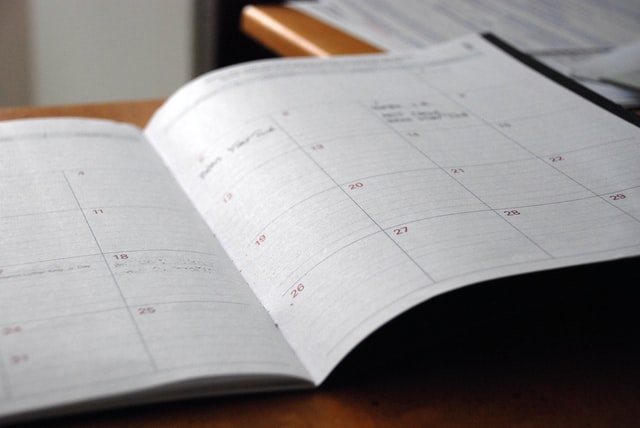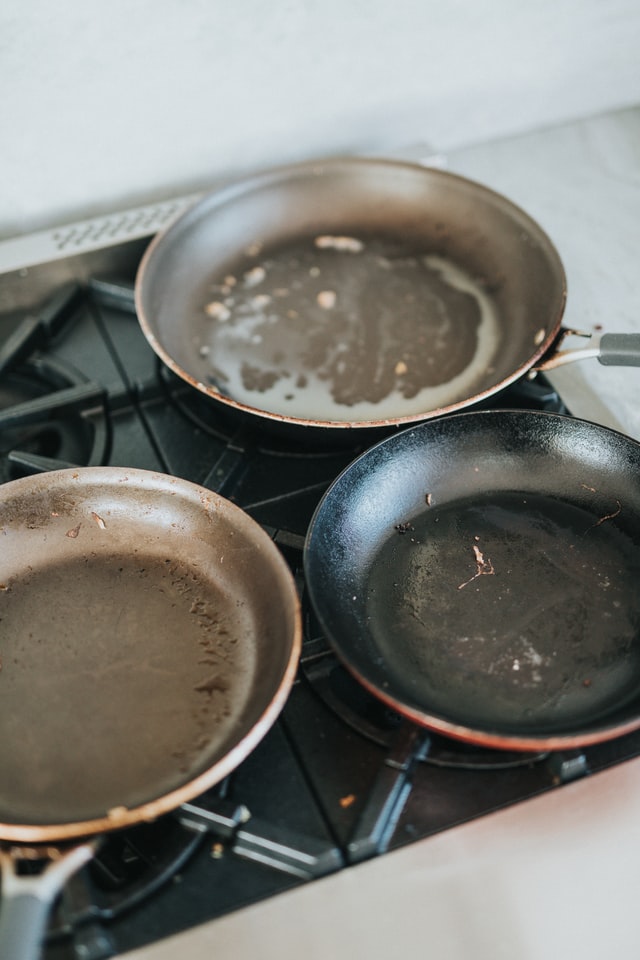How to Keep a Gas Stove Clean
Do you cook food at home often?
If you have a passion for cooking, getting a clean and sparkling stove is important. You might have alternates like the latest microwaves or an electric oven, but the feeling of cooking on a gas stove is simply exceptional. The one thing in your home that should be sparkling clean is your kitchen stove.

Unfortunately, cleaning this stove is an enormous challenge, especially for beginners, and that’s where advice from an oven cleaning specialist can help. It is also one of the things that, as a property owner, your new tenants will be interested in seeing when they visit your property. A greasy, dirty stove is a major turn-off for potential buyers, too. Don’t worry! Some proven tips can help you achieve a stovetop or gas hob that is crystal clean.

At Go Cleaners (London) we know that these cleaning practices will also increase the life of this mandatory kitchen equipment and handle caked-up messes.
If you want to hire professional oven cleaners, get in touch and contact us today! To all DIY enthusiasts, let’s dive in the cleaning process:
In this guide:
Make an Oven Cleaning Schedule
Like every other appliance, stoves also require maintenance.

- Prepare a cleaning schedule for your stove.
- Use sticky notes and paste them on the kitchen wall.
You will never forget this way.
Daily Kitchen Cleaning
Ideally,
- Do a basic wipe-up with a paper towel once in a while.
- Clean food residue with a dish-washing solution and a sponge.
- Clean all drips and spills immediately.

Delays make cleaning more difficult as bits of food, burn-on food, and stubborn stains become a nightmare to remove.
Read:
- 18 Fridge Cleaning Tips & Hacks, YEAH! Keep Refrigerators Sparkling & Organised
- The Deep Cleaning House Checklist to Follow & Room-by-room Chores
- End of Tenancy Cleaning Advice and DIY Tenant Tips
Weekly Oven Cleaning
There should also be a weekly cleaning time. Once a week, maybe on the weekend, scrub the stove by using abrasive cleaners. Get a quality scrubber and a cleaning powder, too. A nylon brush could work, too, but a metal attachment is best.
Monthly Cleaning of Gas Ovens
The third step is your monthly cleaning activity.
- Take out the upper part of the stove
- Clean it thoroughly once a month.
- Scrub dirt and grime not visible on the outside.
Some companies also provide cleaning and maintenance services. However, you need to check the brand of your stove and talk to the customer service representative about it. If you are opening a restaurant, look into these companies well in advance to save yourself the headache.
Though it will cost you, sending it for yearly maintenance is not a bad idea. Just like the gas safety certificate cost is your mandatory yearly expense, add stove cleaning to it. You will get a fully polished, cleaned, and perfect stove.
Prepare a Cleaning Solution
Refrain from spending your hard-earned money on stove cleaners and other harsh chemicals.
- Prepare a cleaning solution at home;
- Fill it in a spray bottle;
- Enjoy cheap cleaning at home;
- Take a container.
- Fill it with an equal proportion of dish-washing solution and apple-cider vinegar.
- Add detergent to it, but mind the risk of hazardous products. It should be half of the quantity of vinegar.
- Mix well, and you’re ready.
Since vinegar is non-toxic and dish soap comes with a medium strength base, combining them gives the best results. Ready-to-use cleaners are harsh and can spoil the stove surface of your stove with regular use. You can experiment with recipes including white vinegar and baking soda, too.
Clean Oven Grates
The first thing you want to do is remove the oven grate carefully and place it in a warm tub of soapy dishwater. Most gas stoves come with an individual or one big grate. Depending upon its design,
- Dismantle and soak all or the single grate in hot water.
- Fill the sink with hot water.
- Add dish-washing powder to it. After 30 minutes,
- Scrub the grate gently from all sides.
- Purge it with water.
- Dry and place it back on the stove.
- Don’t save on elbow grease.
Water should be warm enough to melt the grease and grime, and it should have enough dish soap in it to act against the oily residue on the grate. A shallow bucket will be the perfect place to soak the grate while you work on the other parts of the stove.
Make sure the grate has had enough time to soak to really get rid of that tough, sticky grease. Once the debris has softened after 1 or 2 hours, use a non-scouring pad to clean the grates.
Yes, this process requires time and effort. You can do it on a monthly basis. Just be careful not to clog your drain, as that’s more trouble. Also, be delicate with each gas burner, as you wouldn’t want to damage any of it. Gas flow is dangerous!
Remove Rings from Burner & Soak
- The next step is to remove the rings from your burner and soak them as well in the hot soapy water.
- Rings typically have a lot of grease and food debris on them, so giving them a good soak will quickly rid them of any oily residue that you have not been able to get rid of during your daily cleaning.
- Use a non-scouring pad to clean the rings.
Use Multi-Purpose Cleaner on Stove Top
- Take a multipurpose cleaner and spray it on your gas stove top.
- It is important that the multipurpose cleaner is non-abrasive so that it does not stain your stove top if it is stainless steel.
- Always check the labels of your cleaners to make sure they are safe to use on your kitchen surfaces.
- Let the cleaner sit for at least 5 minutes.
- Take a nice soft microfiber cloth.
- Wipe away the residue on the stove top.
- Again, using a soft cloth will ensure you do not scrape or scratch your stove top.
- If you use a sponge or the back of the sponge, you are bound to scratch your stainless-steel gas stove top.
Yikes!
Use a Toothbrush for Hard-to-Reach Places
Next, in order to get rid of food debris and oil build up in those nooks and crannies, you can use a soft toothbrush to loosen the debris. This will help to make sure that no part of your stove remains dirty.
A soft cloth may not work on crevices, but a toothbrush is a perfect size to get the job done. You can spray the area first with some multipurpose cleaner to moisten the debris and then let it sit. Once you run the toothbrush over it, it will be easier to clean. Finish with a dry rag to buff and shine your stove.
Finish Off with Baby Oil to Make it Sparkle
Our secret tip? Use a bit of baby oil to really make that stovetop shine. This is a terrific way to give your stovetop that professional clean look that you see when you walk into a new home and see a brand-new gas hob. Use just a dab and not too much, and a dry cloth to rub-down the stove. Your grate and burner rings can now be placed back onto the stove.
Clean Cooker Surfaces
Cleaning the gas stovetop surface is essential if you want thorough cleaning.
When you soak the grate in water, use the time to clean the functional and glass stovetop areas. If you see some tough stains, do not use a knife or any sharp object. We usually get a plastic scraper with a refrigerator. If you have it, use it to remove the build-up.
However, if it’s too hard to remove, just spray a good amount of the cleaning solution on it. Leave for 10 minutes, or until the hard spills become soft. Now dip the sponge in the solution and clean it. If the sponge cannot be removed, try scrubbing it for a while.
At last, you will clean it.
Clean the rest of the space with the sponge too. Now, dry it with the kitchen towel or use a piece of cotton fabric.
Check the Burner Channels
Some of us don’t even know how the burner channels can affect the pressure of the gas. Yes, sometimes these channels get clogged with debris, resulting in blocking the natural gas. Thus, our pans receive less heat than usual.
- Dismantle and soak drip pans.
- Dismantle and soak gas knobs.
Cleaning these channels is, again, tricky. Never go for toothpicks or any wooden stick. If any wooden piece breaks inside the channel, it will cause a chain of problems. So, check your stove’s manual, or call for a gas professional to help, note professionals at Stoves Fitting UK. There are specific types of pipes, and straws, that are suitable for burner channel cleaning. Purchase the right type as per the size and clean them thoroughly.
Do Not Pour Water
Stoves have a long track-back of being filthy.
Here, we feel like pouring water and soaking the entire stove in it. But, never do that! Water will likely penetrate your stove, reach the gas pipeline or electronic ignition stove to cause further issues. The same applies to electric stoves – you just cannot pour water like that!
Cleaning Filthy Stoves
If you haven’t cleaned the stove for several months, now it’s time to look at the steps below:
- Remove stove grates and clean the stove with a dry piece of damp cloth.
- Poor a few drops of dish soap into warm water.
- Soak the grate in hot water infused with liquid soap.
- Remove the burners and check the channels.
- Clean the channels with the help of a suitable tool.
- Dip the scrubber in powder, damp it a little, and start scrubbing.
- Clean the surface again with a dry cloth.
- Dip the sponge in soapy water and clean the surface.
- Dry the surface with a clean towel.
- Scrub and clean the grates, dry them, and fix them back.
The neat and clean stove is now waiting for you to cook again.
Clean Stubborn Grease on Gas Stove Racks with Vinegar
For a gas stove or a rack that has a large amount of grease residue from delicious meals like ground beef recipes, you may need something more powerful than hot soapy water. Often when you move into a new home or have tenants that did not clean up properly after cooking, you will find your gas oven rack has burned grease stains all over it. You may think these can’t be removed, but they can.
All you need to do is place your stovetop rack in a rubbish rack.
- Spray with vinegar.
- Close the bag.
- Leave it overnight.
- Rinse with a scouring cloth and running water in the morning.
- Make sure you wear gloves to protect your hands from the vinegar.
Baking soda can also be used with a scouring pad to get rid of any persistent grease stains. Some experts also recommend ammonia, but it is not as efficient as vinegar and baking soda. Check this comparison video to form your own decision.
How to Clean Clogged Gas Stove Burners
Your gas burners may not be operating at full potential if they are clogged with grease and food debris. Make sure the burner is turned off and has time to cool down. Use a straight pin or a paper clip to dislodge debris from the burner port and the sides of the burner.
Make sure you don’t use a wooden toothpick. Once you have cleaned the burner, place it back on your stove and turn it on. Your flame should be blue and evenly burning from all sides.
Filthy Gas Stoves – Wrap Up
In short, you can keep your stove clean, just like a new one, with a few steps. Regular cleaning after cooking, wiping spills, and using good cleaners are some key points. Besides this, checking the burner channels and detailed cleaning after removing the grate is mandatory. Unless you want a new kitchen, notes Schmidt, putting the time and effort is a must. Stove cleaning will not just increase the hygiene of your food, but it lets you save on hefty repair costs. So, follow your cleaning plan to keep your stoves shiny and clean.